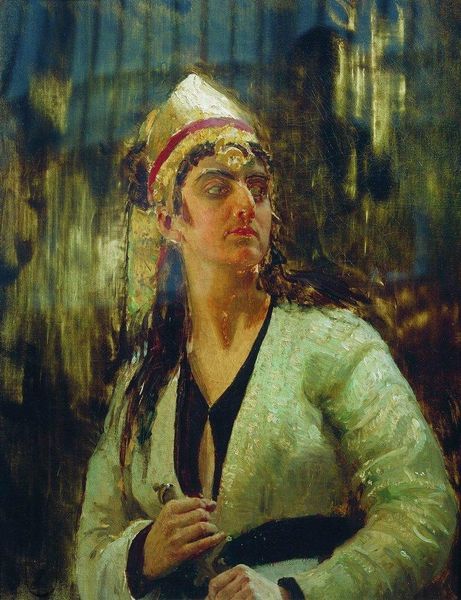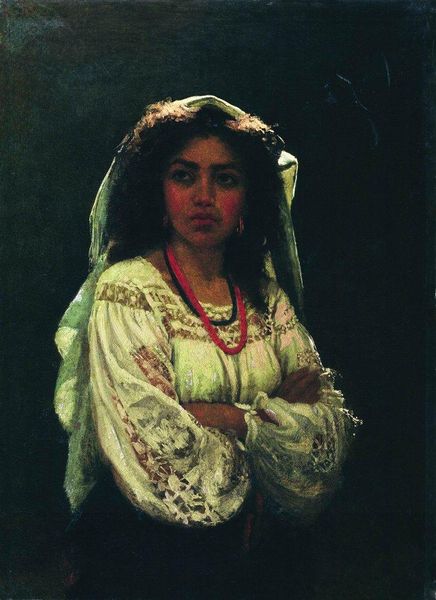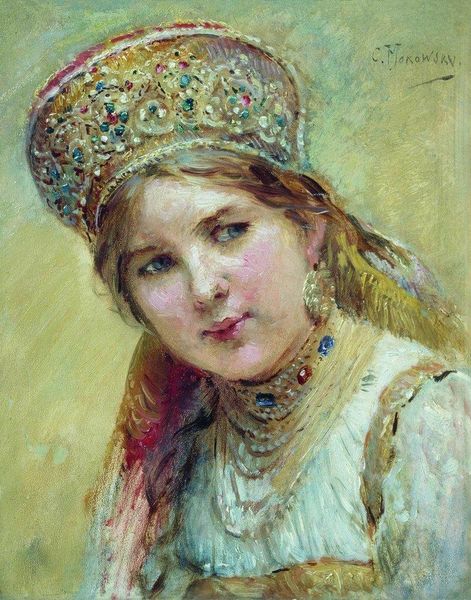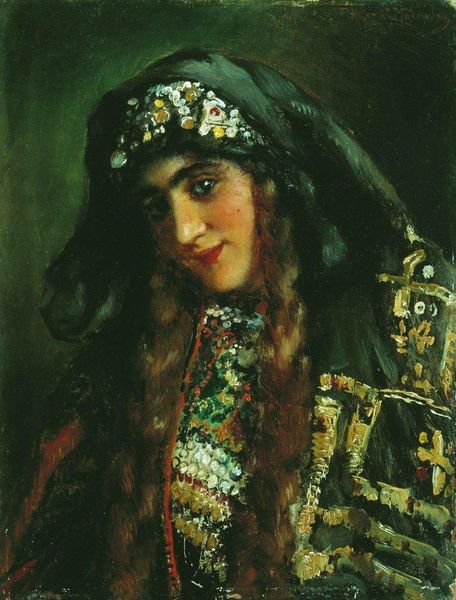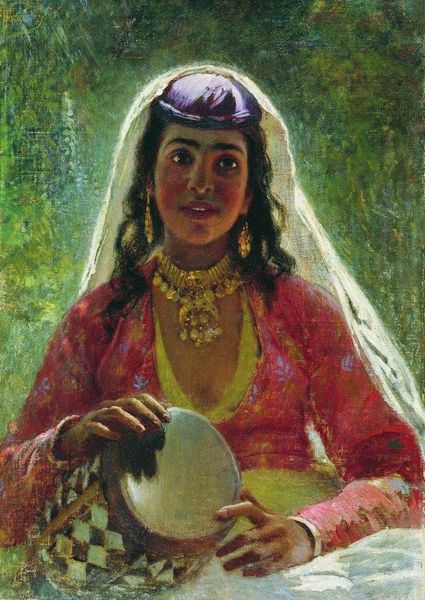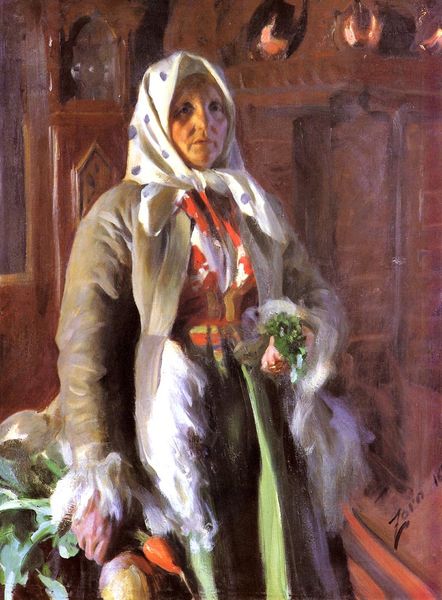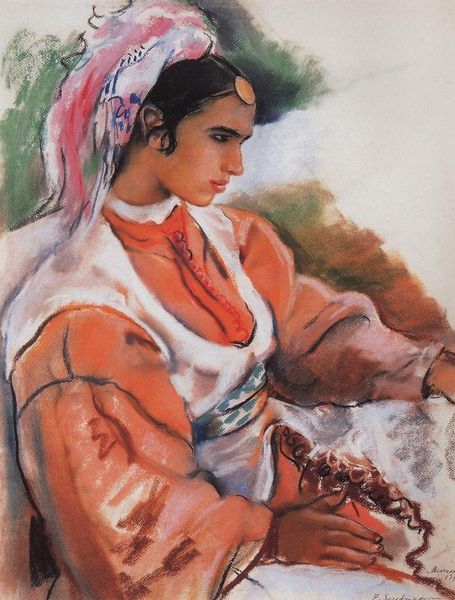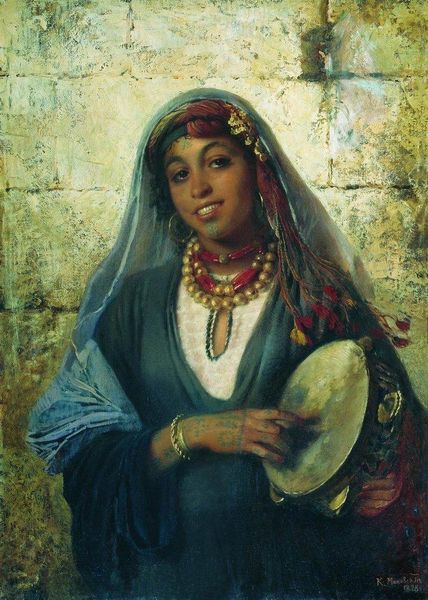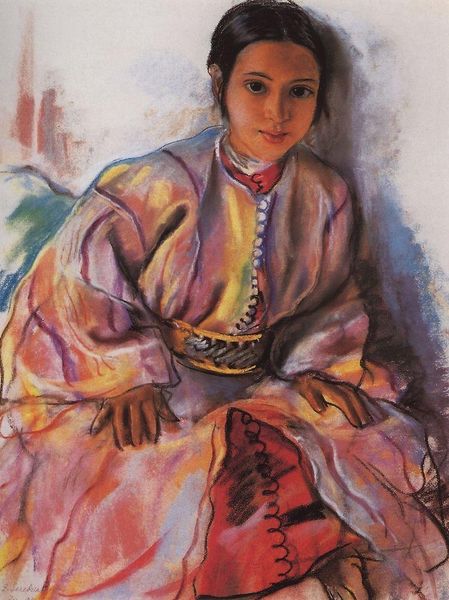
Copyright: Public domain
Editor: Here we have Konstantin Makovsky's "Gipsy," painted in 1880 using oil. I find the figure's downcast gaze quite poignant; there's a real sense of vulnerability. How do you interpret this work, particularly considering its historical context? Curator: Makovsky's "Gipsy" exists within a complex social and political framework. In the 19th century, the Romani people were both romanticized and heavily marginalized. Paintings like these, while seemingly simple portraits, often perpetuated exoticizing stereotypes. Does the woman's attire strike you as realistic, or theatrical? Editor: It does seem slightly romanticized – almost staged, I suppose. So, it's not necessarily an accurate portrayal, but more of an idealised version presented for public consumption? Curator: Precisely. These works frequently catered to the orientalist fascination prevalent at the time, emphasizing perceived differences between Europeans and others, often reinforcing power dynamics and legitimizing colonial attitudes. How do you think this painting contributed to the public perception of the Romani? Editor: I imagine it further cemented those preconceived notions rather than fostering understanding. It's interesting how seemingly simple portraiture can be so deeply embedded in broader socio-political issues. Curator: It certainly is! Artists often operated within, and sometimes challenged, these existing power structures. Thinking critically about the intent behind the image, and the societal forces at play when it was created, allows us to have more informed conversations about its cultural significance today. Has this changed your initial response? Editor: Absolutely. I still appreciate its beauty, but I now see the complexities of representation and how easily stereotypes can be reinforced, even unintentionally. Curator: A deeper understanding for us both, then. This work speaks to the pervasive influence of cultural narratives in shaping art, and how art, in turn, reinforces or subverts them.
Comments
No comments
Be the first to comment and join the conversation on the ultimate creative platform.
